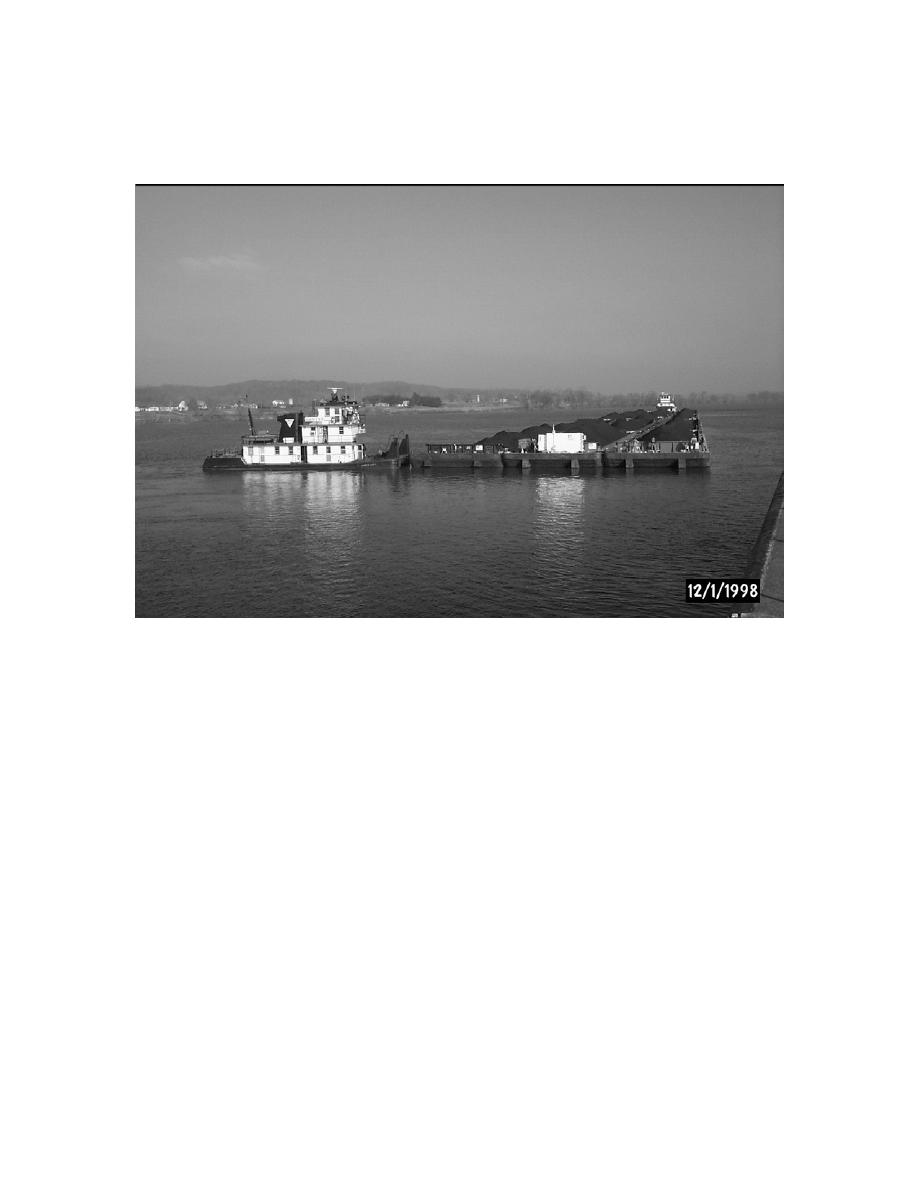
ETL 1110-2-563
30 Sep 04
barge train during impact. The helper boat, an 820-kW (1,100-horsepower) towboat, the MS Quaker
State, was supplied by Kanawha River Towing of Point Pleasant, West Virginia. The 15-barge tow and
helper boat are shown in Figure F-1.
Figure F-1. Barge train used for full-scale experiments
c. Forty-four impact experiments were successfully conducted on both the rigid concrete upper
guide wall (baseline and load-measuring device) and on the prototype fendering system (baseline and
load-measuring device). A matrix of the required angles and velocities was assembled for the comparison
between the baseline and load-measuring experiments on both the concrete and prototype fendering
systems. This matrix was successfully filled for each impact case during these 44 experiments. The final
matrix contained angles of impact from 5 to 25 degrees with velocities of 0.2 to 1.2 m/sec (0.5 to 4 ft/sec).
An example matrix for velocities and angles for the load beam experiments is shown in Figure F-2.
experiments. This included accelerometers (over 12 locations on barge train), strain gages, and clevis pin
load cells in the lashing parts. The instrumentation data were collected using over 80 channels of instru-
mentation on both the barge and lock wall. These experiments also utilized a Differential Global
Positioning System on the barge train to measure the velocity, angle, and rotation during impact as well as
high-speed cameras to capture the barge-wall and barge-fender interaction. In addition, new instrumenta-
tion was developed to measure the actual load normal to the barge and wall. This consisted of a load-
measuring beam that had two clevis pin load cells capable of measuring up to 5,388 kN (1,200 kips) of
force. In addition, a system of polyvinyl di-flouridene sensors was developed at ERDC as part of a
redundant load measurement system on the load beam.
F-2


 Previous Page
Previous Page
